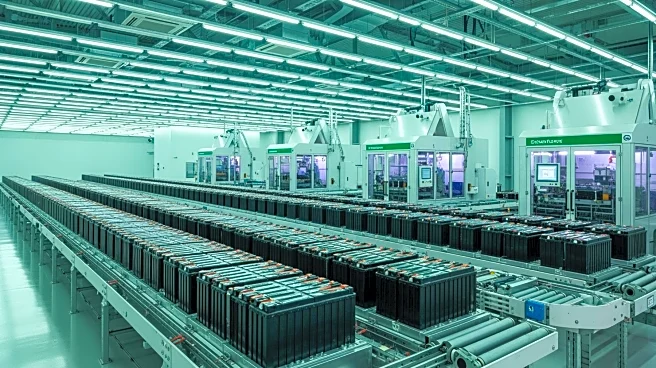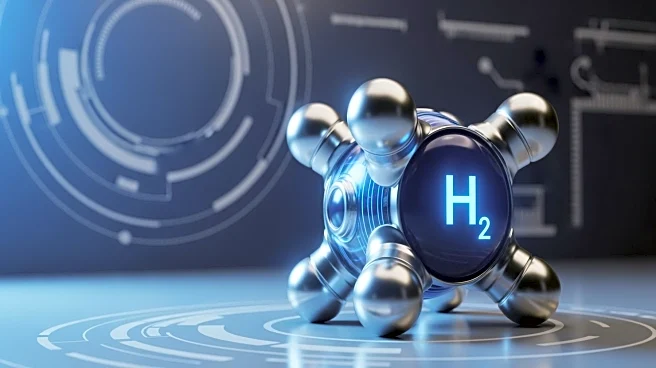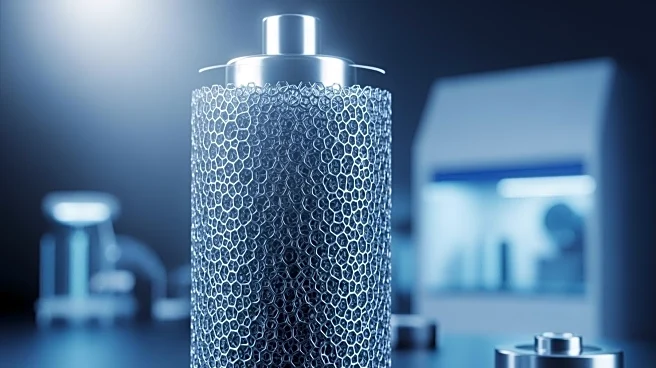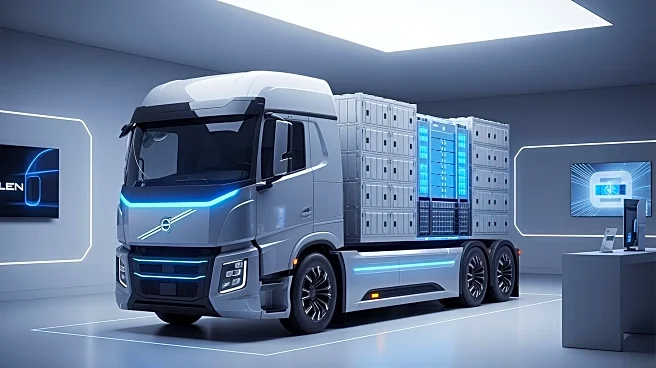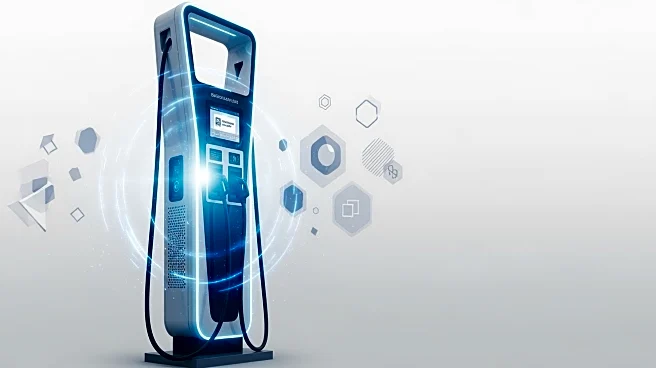What's Happening?
A robust bilayer solid electrolyte interphase (SEI) has been developed for zinc electrodes, significantly improving their utilization rate and efficiency. The SEI consists of a crystalline ZnCO3-rich outer
layer and an amorphous ZnS-rich inner layer, providing mechanical stability and homogeneous Zn2+ transport. This innovation enables reversible zinc plating and stripping for 4800 cycles with an average Coulombic efficiency of 99.95%, marking a breakthrough in zinc electrode technology.
Why It's Important?
The bilayer SEI design addresses critical issues in zinc electrode performance, such as dendrite formation and side reactions. By enhancing mechanical stability and transport efficiency, the technology could lead to more reliable and efficient zinc-based batteries, benefiting industries focused on energy storage and sustainability. The innovation may also drive advancements in electric vehicles and portable electronics.
What's Next?
Further research is expected to optimize the bilayer SEI design for commercial applications. The technology could attract interest from companies seeking sustainable energy solutions, potentially leading to partnerships and investments. Regulatory bodies might evaluate the environmental benefits and safety standards of zinc-based batteries, influencing future energy policies.
Beyond the Headlines
This development could catalyze a shift towards more sustainable battery technologies, emphasizing the importance of eco-friendly energy storage solutions. It may also inspire further research into solid electrolyte interphases, expanding their applications in various industries.


